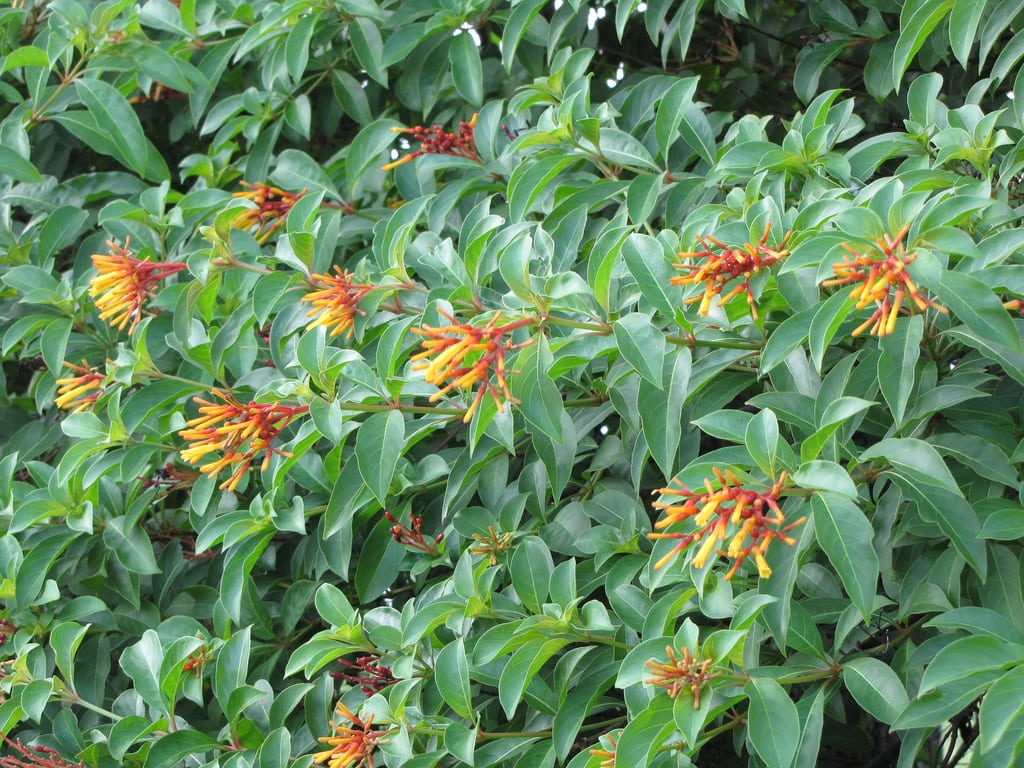Firebush Transplant Guide – How To Transplant A Firebush Shrub


Also known as hummingbird bush, Mexican firebush, firecracker shrub, or scarlet bush, firebush is an eye-catching shrub, appreciated for its attractive foliage and abundance of dazzling, orange-red blooms. This is a fast-growing shrub that reaches heights of 3 to 5 feet (1 to 1.5 m.) fairly quickly and moving a firebush can be tricky. Read below for tips and advice on transplanting a firebush without damaging the roots.
Preparing a Firebush Transplant
Plan ahead if possible, as advance preparation significantly increases the chance of successfully transplanting a firebush. The best option on when to transplant firebush is to prepare in fall and transplant in spring, although you can also prepare in spring and transplant in fall. If the shrub is very large, you may want to prune the roots a year ahead. Preparation involves tying the lower branches to ready the shrub for root pruning, then pruning the roots after tying up the branches. To prune the roots, use a sharp spade to dig a narrow trench around the base of the firebush. A trench measuring approximately 11 inches (28 cm.) deep and 14 inches wide (35.5 cm.) is sufficient for a shrub measuring 3 feet (1 m.) in height, but trenches for larger shrubs should be both deeper and wider. Refill the trench with removed soil mixed with about one-third compost. Remove the twine, then water well. Be sure to water a root-pruned shrub regularly during the summer months.
How to Transplant a Firebush
Tie a brightly colored piece of yarn or ribbon around the plant’s uppermost, north-facing branch. This will help you orient the shrub correctly in its new home. It will also help to draw a line around the trunk, about an inch (2.5 cm.) above the soil. Tie the remaining branches securely with sturdy twine. To dig the firebush, dig a trench around the trench you created a few months ago. Rock the bush from side to side while you ease a shovel underneath. When the shrub is free, slide burlap under the shrub, then pull the burlap up around the firebush. Be sure to use organic burlap so the material will rot into the soil after planting without restricting growth of the roots. Once the roots are wrapped in burlap, place the shrub on a large piece of cardboard to keep the root ball intact while you move the firebush to the new location. Note: Soak the rootball shortly before the big move. Dig a hole in the new location, twice as wide as the width of the root ball and slightly less deep. Place the firebush in the hole, using the north-facing branch as a guide. Be sure the line around the trunk is about an inch (2.5 cm.) above soil level. Water deeply, then apply about 3 inches (7.5 cm.) of mulch. Be sure the mulch doesn’t mound against the trunk. Water regularly for two years. The soil should be consistently moist but not soggy.
Sign up for the Gardening Know How newsletter today and receive a free copy of our e-book "How to Grow Delicious Tomatoes".

A Credentialed Garden Writer, Mary H. Dyer was with Gardening Know How in the very beginning, publishing articles as early as 2007.